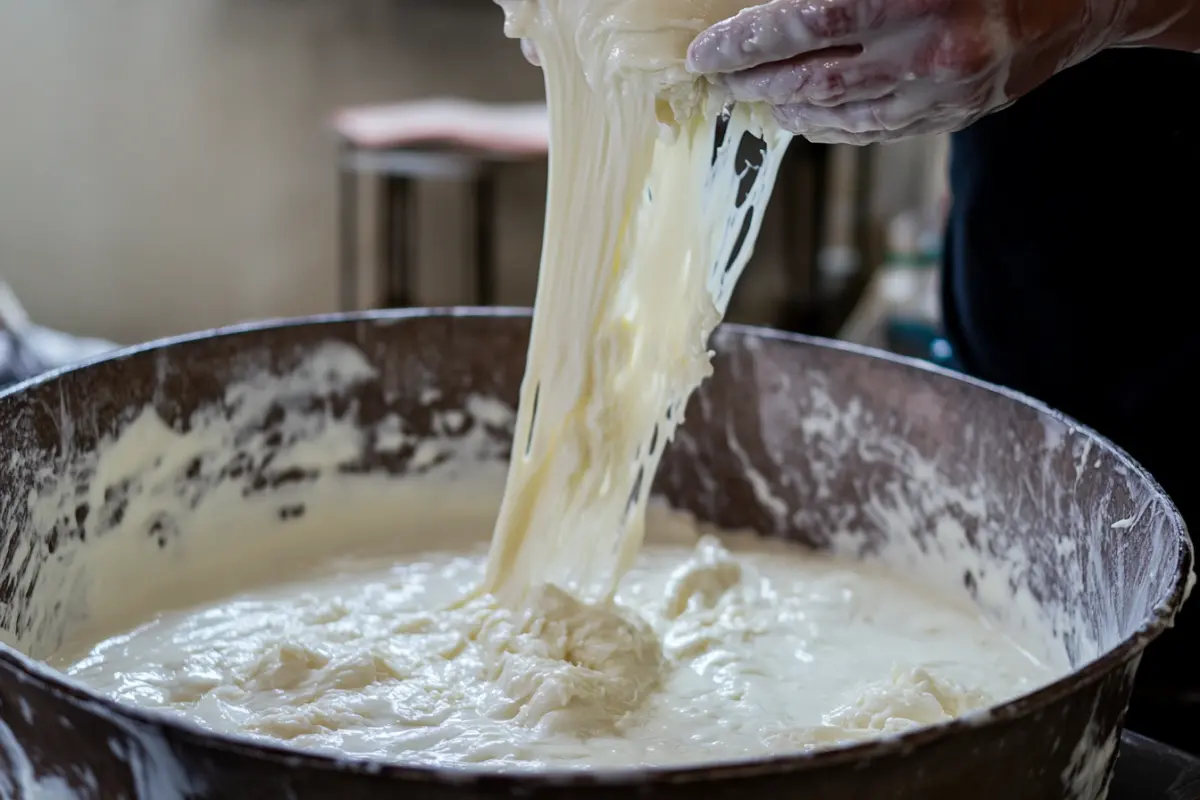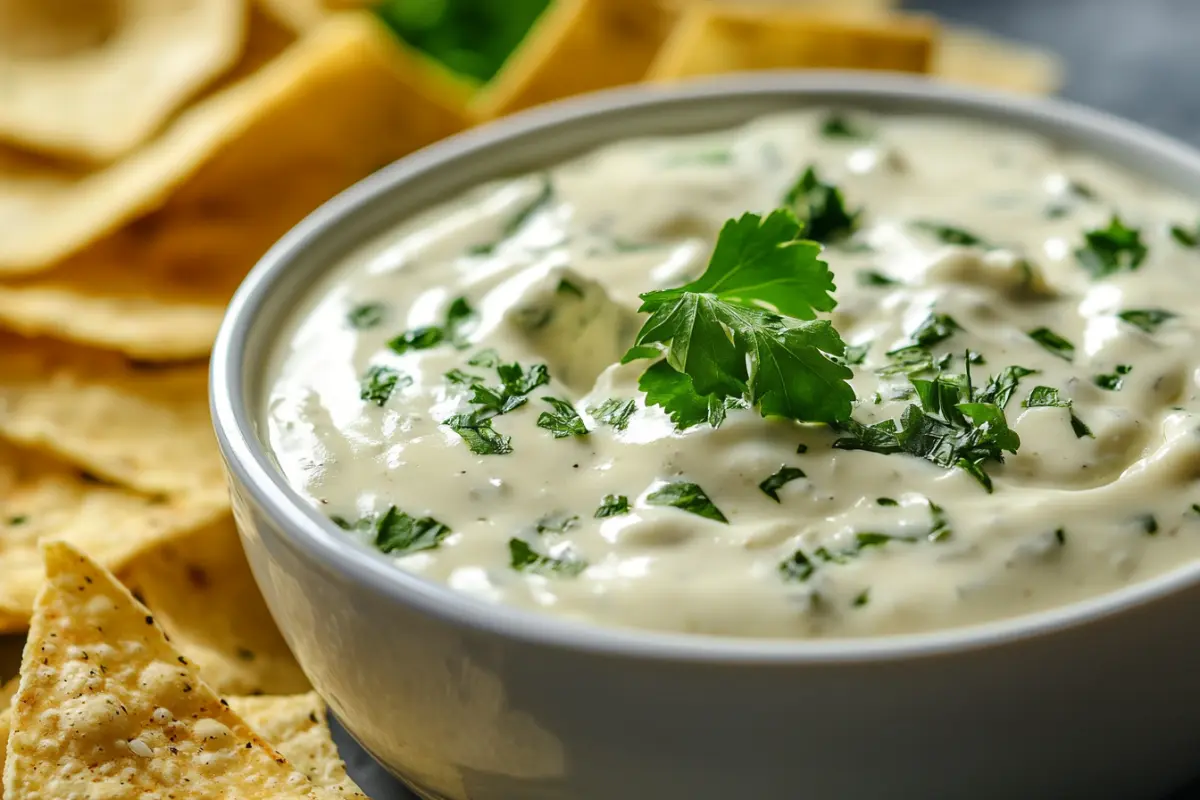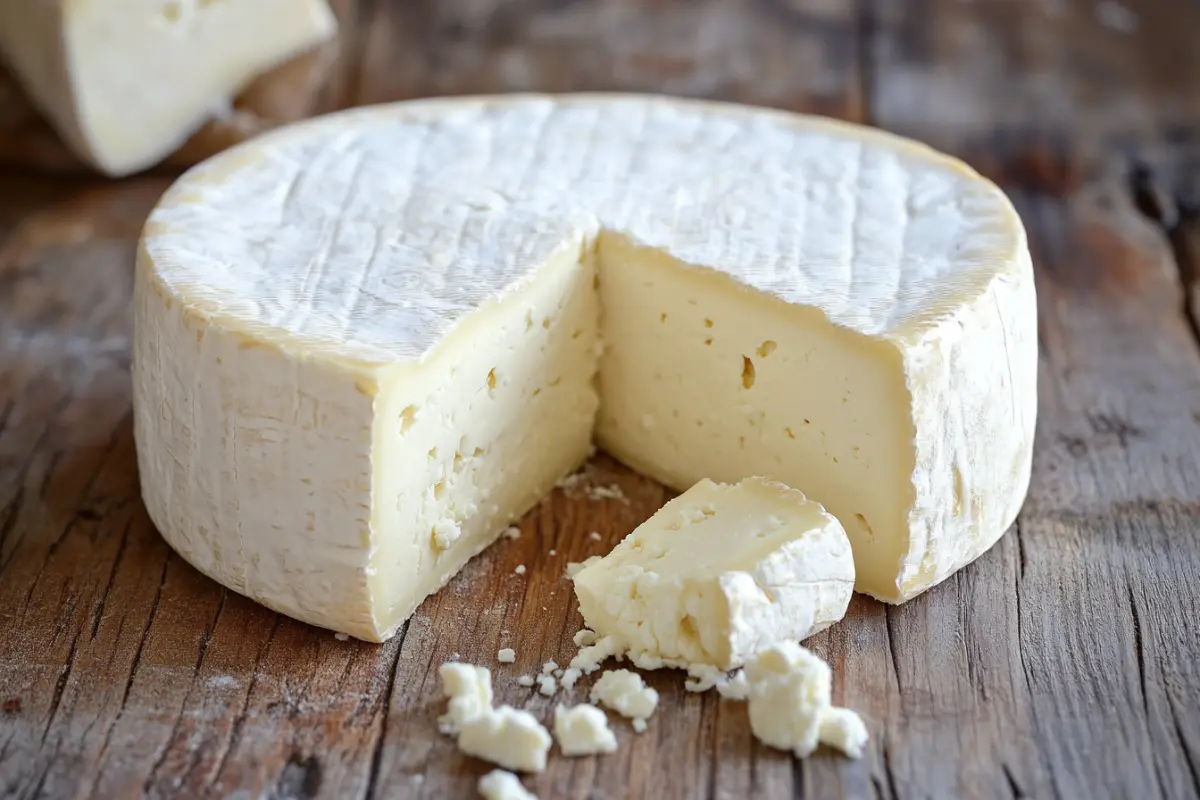Introduction to Queso Blanco
Queso Blanco directly translates to “white cheese,” and it’s a staple in many Latin American and Tex-Mex cuisines. This simple, fresh cheese boasts a mild flavor and crumbly texture, making it incredibly versatile. Whether you’re enjoying enchiladas or experimenting with new recipes, queso blanco adds a creamy touch that enhances any dish. More than just an ingredient, Queso Blanco recipe represents a cultural icon. In many Latin American homes, families make this cheese fresh, symbolizing tradition and the care that goes into home-cooked meals. Its widespread use extends beyond the kitchen, connecting heritage and family practices passed down through generations. The adaptability of queso blanco makes it a favorite choice for both everyday meals and special occasions.
History and Origin of Queso Blanco
Queso blanco originates from ancient Mexico, where Spanish colonists introduced dairy products. Before their arrival, indigenous civilizations like the Mayans and Aztecs relied primarily on plant-based foods, as domesticated livestock were not native to the Americas. The introduction of cattle and goats led to the creation of various dairy products, including queso blanco.
The local cuisines quickly integrated queso blanco, evolving it into the cheese we know today. Over time, it became a staple in many Latin American countries, with each region developing its own variations and preparation methods. Although the basic ingredients and production process remain relatively consistent, regional differences in flavor and texture have emerged, reflecting the diverse culinary traditions across Latin America.
As Latin American immigrants brought their culinary traditions to new countries, queso blanco found a place in Tex-Mex cuisine in the southwestern United States. Today, it symbolizes the blending of cultures and flavors, cherished in both traditional Mexican dishes and inventive Tex-Mex creations.
Production Process of Queso Blanco
Making queso blanco is straightforward, typically requiring just a few basic ingredients: milk, an acid like lemon juice or vinegar, and salt. This simplicity contributes to its accessibility and versatility.
- Ingredients: The primary ingredient in queso blanco is milk, sourced from cows, goats, or even sheep. The type of milk used influences the final flavor and texture of the cheese. An acid, such as lemon juice or vinegar, initiates the curdling process, separating the curds from the whey. Salt enhances the flavor, though its use varies depending on personal preference or regional practices.
- Step-by-Step Production:
- Heating the Milk: Heat the milk slowly to just below boiling, around 180°F (82°C), to prevent scorching.
- Curdling: Add the acid once the milk reaches the desired temperature, causing the milk to curdle and form curds. This step is crucial, as it determines the texture of the final product.
- Straining the Curds: Strain the curds through cheesecloth to remove the whey. Adjust this step to achieve either a firmer or softer cheese.
- Forming the Cheese: Shape the strained curds into a block or round, then press to remove any remaining moisture.
- Cooling and Storing: Cool the cheese and store it in the refrigerator, where it keeps for several days.

- Comparison with Other Cheeses: Queso blanco is often compared to other fresh cheeses like queso fresco and paneer. Though similar, these cheeses differ in their production processes and final textures. Queso fresco, for example, is saltier and more crumbly, while paneer, an Indian cheese, is pressed more firmly, giving it a denser texture.
Varieties and Types of Queso Blanco
Queso blanco comes in several varieties, from traditional homemade versions to commercially produced ones found in stores.
- Traditional vs. Commercial Varieties: Traditional queso blanco is often made at home or by artisanal cheesemakers, allowing for greater control over flavor and texture. Commercially produced queso blanco is widely available in supermarkets, offering a more consistent texture and flavor due to standardized production methods. However, many people prefer the rich, nuanced flavors of artisanal queso blanco, which vary based on the milk used and specific cheesemaking techniques.
- Flavor Variations: While the basic recipe for queso blanco is simple, variations exist depending on the type of milk used and any additional ingredients. For example:
- Goat or Sheep Milk: These variations produce a more robust and tangy flavor compared to cow’s milk.
- Herb-Infused: Some queso blanco is infused with herbs, spices, or chilies, adding an extra layer of flavor. Popular additions include cilantro, jalapeños, and garlic, each contributing a unique taste.
Culinary Uses of Queso Blanco
Queso blanco shines in various dishes, from traditional Mexican fare to inventive Tex-Mex recipes. Its mild flavor and creamy texture make it a versatile ingredient for both savory and sweet dishes.
-
In Mexican Cuisine:
- Enchiladas: Queso blanco is often crumbled over enchiladas, adding a creamy contrast to the spicy sauce.
- Chiles Rellenos: This classic dish uses queso blanco as a filling for roasted poblano peppers, complementing the smoky flavor of the chilies.
- Tacos: A sprinkle of queso blanco elevates a simple taco, providing a cooling balance to the salsa’s heat.
- Elotes: Grilled corn on the cob, or elotes, traditionally gets topped with queso blanco, chili powder, and lime juice, creating a perfect blend of flavors.
-
In Tex-Mex Cuisine:
- Nachos: In Tex-Mex cuisine, queso blanco melts over nachos, creating a rich and creamy sauce that pairs well with jalapeños and guacamole.
- Burritos: Adding queso blanco to a burrito introduces a creamy element that enhances the overall flavor.
- Fajitas: Slices of queso blanco add a mild, creamy contrast to the seasoned meats and vegetables in fajitas.
-
As a Topping or Filling:
- Salads: Crumbled queso blanco adds creaminess to salads, pairing well with crisp vegetables and tangy dressings.
- Soups: Add a dollop of queso blanco to soups, where it melts slightly, enriching the broth.
- Grilled Vegetables: Use queso blanco as a topping for grilled vegetables to provide a creamy contrast to the charred flavors.
- Quesadillas and Stuffed Peppers: As a filling, queso blanco melts beautifully, creating a gooey interior in quesadillas or stuffed peppers.
-
Cooking Tips:
- Melting Queso Blanco: Melt queso blanco slowly over low heat to avoid graininess. Adding a bit of milk or cream can help achieve a smoother texture.
- Achieving the Best Texture: Avoid overheating queso blanco to prevent graininess. Melt it gently and stir constantly.
- Preventing Graininess: Use low heat and consider adding a stabilizer like cornstarch to keep queso blanco smooth.
Popular Queso Blanco Recipes
Queso blanco is a versatile ingredient used in various recipes, from dips to fried cheese dishes.
-
Queso Blanco Dip:
- Ingredients: 1 cup queso blanco, 1/2 cup milk, 1 tablespoon butter, 1/4 teaspoon cumin, and 1/4 teaspoon chili powder.
- Instructions: Melt the butter in a saucepan over low heat. Add the queso blanco and milk, stirring until the cheese melts and the mixture is smooth. Stir in the cumin and chili powder. Serve warm with tortilla chips.

-
Fried Queso Blanco:
- Ingredients: 1 block of queso blanco, 1/2 cup flour, 2 beaten eggs, 1/2 cup breadcrumbs, and oil for frying.
- Instructions: Cut the queso blanco into 1-inch cubes. Dredge the cubes in flour, then dip in beaten eggs, and finally coat with breadcrumbs. Heat oil in a frying pan over medium heat. Fry the queso blanco cubes until golden brown on all sides. Serve immediately with a dipping sauce of your choice.
-
Queso Blanco in Chiles Rellenos:
- Ingredients: 4 poblano peppers, 1 cup queso blanco, 1/2 cup cooked rice, 1/4 cup chopped cilantro, and 1/4 teaspoon cumin.
- Instructions: Roast the poblano peppers until charred, then peel and remove the seeds. Combine the queso blanco, cooked rice, cilantro, and cumin in a bowl. Stuff the mixture into the roasted peppers. Place the peppers in a baking dish and bake at 350°F for 20 minutes, or until heated through.
-
Serving Suggestions:
- Serve queso blanco dip with tortilla chips, pretzel bites, or fresh vegetables.
- Pair fried queso blanco with a spicy salsa or a tangy yogurt dip.
- Use queso blanco stuffed chiles as a main dish, accompanied by a side of rice and beans.
Health Benefits and Nutritional Information
Queso blanco is not only delicious but also offers several health benefits, making it a nutritious addition to your diet.
-
Nutritional Profile:
- Protein: Queso blanco is a good source of protein, essential for muscle growth and repair.
- Calcium: Like most dairy products, queso blanco is high in calcium, vital for maintaining strong bones and teeth.
- Vitamin A: This cheese also contains vitamin A, important for eye health and immune function.
-
Health Benefits:
- Low Sodium: One of the advantages of queso blanco is its relatively low sodium content compared to other cheeses, making it a heart-healthy option.
- High Calcium: The high calcium content supports bone health, particularly in growing children and older adults.
- Suitable for Certain Diets: Queso blanco is naturally gluten-free and can be incorporated into vegetarian diets, making it a versatile choice for those with specific dietary needs.
-
Considerations:
- Fat Content: While queso blanco is nutritious, it is also high in fat. Those watching their fat intake should enjoy it in moderation.
- Lactose Intolerance: Individuals with lactose intolerance may need to limit their consumption of queso blanco, as it contains lactose.
Storage and Shelf Life of Queso Blanco
To enjoy queso blanco at its best, store it properly.
- Proper Storage: Store queso blanco in the refrigerator, preferably in an airtight container to prevent it from absorbing other odors. Keep it in the coldest part of the refrigerator, usually the back.
- Shelf Life: Once opened, queso blanco typically lasts about a week. If the cheese develops an off smell, changes in color, or a slimy texture, discard it.
Where to Buy Queso Blanco
Queso blanco is widely available and can be found in several places.
- Local Grocery Stores: Most grocery stores carry queso blanco in the dairy section, often near other specialty cheeses.
- Online Retailers: If you prefer to shop online, reputable retailers like Amazon offer various queso blanco options, including artisanal varieties.
- Specialty Shops: For a more authentic or artisanal product, consider visiting a specialty cheese shop, where you can find queso blanco made with traditional methods.
FAQs Section
- What is the difference between queso blanco and queso fresco? Queso blanco is firmer and often used in cooking, while queso fresco is crumbly and typically used as a topping.
- Can you make queso blanco at home? Yes, queso blanco is easy to make at home with just a few ingredients like milk and an acid such as lemon juice or vinegar.
- Is queso blanco suitable for vegetarians? Queso blanco is suitable for vegetarians as it is typically made without rennet, a common ingredient in other cheeses that comes from animal sources.
- How do you prevent queso blanco from becoming grainy when melted? To prevent queso blanco from becoming grainy, melt it slowly over low heat and consider adding a small amount of milk or cream.
- What dishes can you make with queso blanco? Queso blanco is versatile and can be used in dishes like enchiladas, nachos, soups, salads, and stuffed peppers.
Conclusion
Queso blanco is a versatile cheese that plays an essential role in both traditional and modern cuisines. Its mild flavor and creamy texture make it a perfect addition to a wide variety of dishes, from Mexican classics to creative Tex-Mex fare. Whether you’re exploring new culinary techniques or simply enjoying a delicious cheese, queso blanco is a fantastic choice. Don’t hesitate to experiment with this beloved ingredient in your kitchen today!


1 thought on “Authentic Queso Blanco Recipe: A Versatile Cheese for Every Dish”